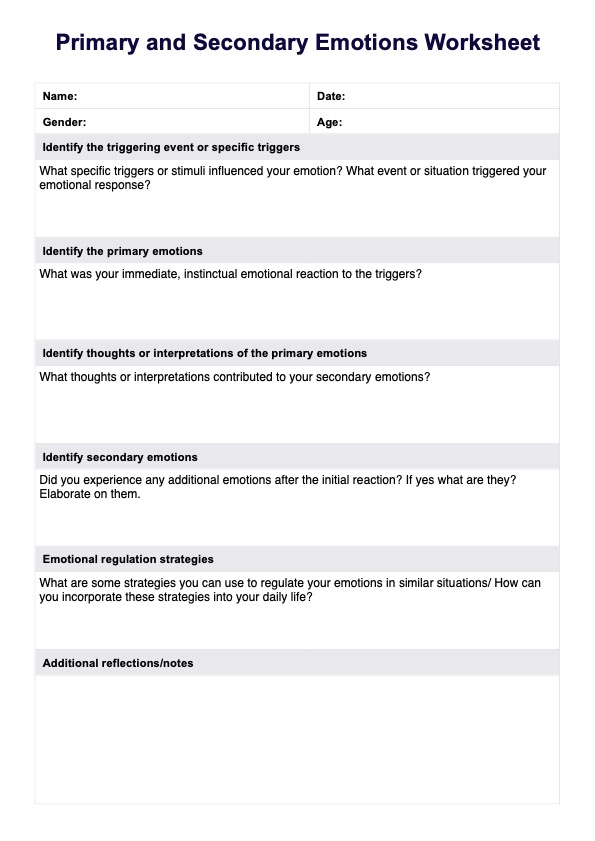Primary emotions include joy, sadness, anger, fear, and disgust. These are considered the fundamental and instinctual responses to various stimuli.

Download our free Primary and Secondary Emotions Worksheet to aid clients in exploring their emotional experiences and fostering emotional resilience.
Primary emotions include joy, sadness, anger, fear, and disgust. These are considered the fundamental and instinctual responses to various stimuli.
Yes, primary emotions can evolve into secondary emotions. For example, feeling the initial joy of receiving a new toy can turn into secondary emotions like sadness or frustration if the toy breaks.
Individuals can identify their primary emotions by reflecting on recent events or situations that elicited strong emotional responses. Prompting them to recognize immediate feelings such as joy, sadness, anger, fear, or disgust helps identify primary emotions.
EHR and practice management software
*No credit card required
Free
$0/usd
Unlimited clients
Telehealth
1GB of storage
Client portal text
Automated billing and online payments